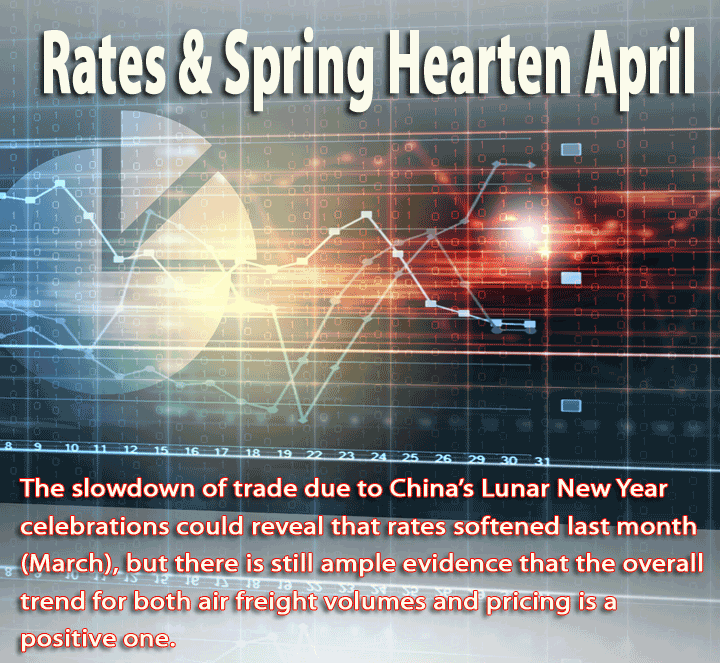
Drewry’s East-West
Air Freight Price Index gained 2.2 points in February after two months
of falling rates in which the index had lost over 21 points from November’s
all-time high.
The February reading of 101.8 was 5.6 points
higher than a year earlier while average rates—including base rate,
fuel surcharge, and security surcharge but excluding door delivery costs—across
the 21 major East-West routes covered by the analyst reached $3.30 per
kg in February, up from $3.23 in January 2015, and $3.12 in February 2014.
Drewry said the February findings were “indicative
of the degree to which the market has recovered  over
the past 12 months.” over
the past 12 months.”
The turnaround the market has witnessed
over the last year, especially ex-Asia, was also apparent from Airports
Council International’s just-published yearly round-up of cargo
airport performance. The world’s top 20 international air freight
hubs all posted positive gains with the exception of Dubai (DXB), although
this was because of the transfer of more cargo operations to nearby Dubai
World Central which, like DXB, is managed by Dubai Airports.
The world’s largest international
hub in 2014 was again Hong Kong, which handled 4.38m metric tons of cargo,
up 6 percent compared to a year earlier. Incheon (2.47m tons, up 3.3 percent),
Dubai (2.37m tons, down -3.1 percent), Shanghai (2.33m tons, up 8.1 percent),
and Taipei (2.07m tons, up 6.2 percent) made up the rest of the top five
international airports.
There are strong signs that the gains posted
last year by the world’s leading airports are being consolidated
this year.
The Association of Asia Pacific Airlines
said the region’s carriers recorded a “hefty” 20.5 percent
year-on-year jump international air cargo demand in February. This outpaced
a 12.6 percent increase in offered freight capacity and resulted in a
4.2 percentage point increase in the average international freight load
factor, which climbed to 65.2 percent.
Andrew Herdman, AAPA Director General, said
the timing of the Chinese New Year holiday period had affected the monthly
comparisons but, combining January and February traffic figures to provide
more realistic year-on-year comparisons, the first two months of the year
had seen an “impressive” 12.8 percent increase in air freight
demand “with robust demand for Asian exports, particularly to North
America where the recent port dispute affected some maritime shipping
operations.”
Reflecting the performance of Asia’s
carriers in Q1, HKIA posted a 10.3 percent year-on-year increase in cargo
throughput in the first two months of the year. “The combined growth
of cargo throughput for the first two months was mainly attributed to
12 percent year-on-year growth in exports and 10 percent growth in transhipments,”
said the Airport Authority. “Traffic to/from North America and Southeast
Asia increased most significantly compared to other key regions.”
Shanghai Pudong saw a 26.5 percent surge
in international cargo volumes in February, while Incheon report a 6.8
percent increase compared to a year earlier.
Drewry expects air freight pricing to soften
through March, as the sector adjusts to lower shipping volumes following
the Chinese New Year holiday period and easing U.S. West Coast port congestion.
Thereafter the analyst anticipates rates will recover with the onset of
the Northern Hemisphere spring season in April. |





